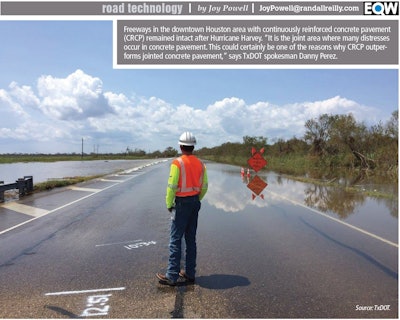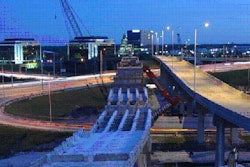
Survival of that infrastructure points to the high resiliency of continuously reinforced concrete paving (CRCP) after flooding and other disasters, says Elizabeth Lukefahr, executive director of the Texas Concrete Pavement Association.
“When the waters receded, other than cleaning up debris, there was no repair of any (CRCP) section of Texas DOT’s pavements in the city that were flooded,” says Lukefahr. For many of those pavements, it was the third time they had flooded in 15 years.
In a state already committed to CRCP as its primary concrete pavement, the freeways’ ability to weather the flood brought a fresh look at why spending more upfront to install CRCP makes sense, says Lukefahr.
With Texas, Illinois and California leading CRCP use, other states are beginning to incorporate it, such as Virginia, Oklahoma and New Mexico. Indiana recently used CRCP – which requires less concrete thickness compared to jointed plain – to rebuild the interstate pavement under a bridge that needed higher clearance because it kept getting hit by trucks.

Lukefahr says the resiliency of CRCP can be critical, not just in flooded areas, but also for roads with heavy truck traffic. And in areas with wildfires, it will fare much better than asphalt, she says.









